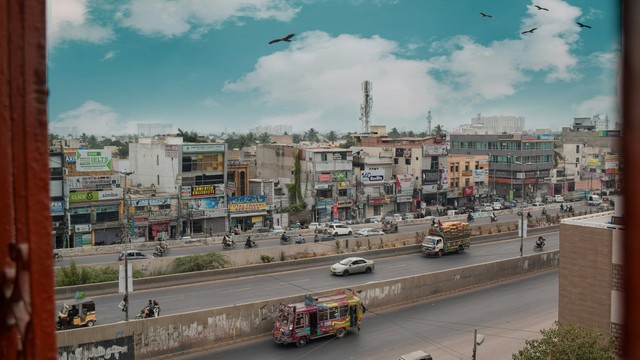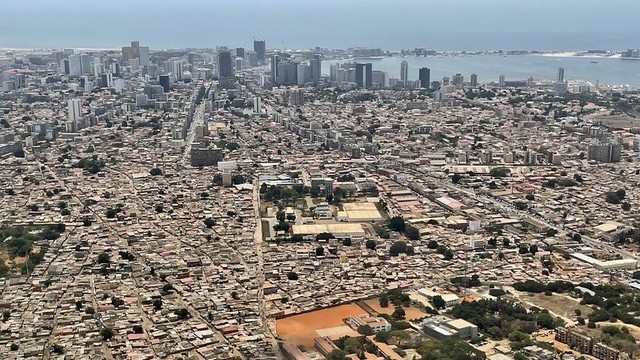Do national governments and international agencies need urban health departments?
The fourth and final part of a personal commentary on urban health over the decades looks at why urban health must be recognised as a distinct category within health programmes – and by institutions.


A large amount of garbage and waste in Igarapé do Franco, one of the most well-known water courses in the west of Manaus, Amazonas, Brazil (Photo: IMF Photo/Raphael Alves via Flickr, CC BY-NC-ND 2.0)
Reflecting on the World Health Organization’s policy brief (October 2023), should there be a category termed ‘urban health’ among the different, commonly-used categories into which health problems are assigned? Of course, existing ones – such as occupational health and safety, chronic diseases, environmental health, mental health and health care – cover both rural and urban populations. So why should we need urban departments? Because urban health has been sorely neglected.
Different agencies with different responsibilities will want to have relevant categories to enable them to guide, inform, research and report on their work – and fight their corner when decisions are made about resource allocation. The lack of relevant data means the more powerful agencies get more support. These categories have sub-categories too – just look at the bewildering lists of departments/units in large hospitals.
The categories are useful for identifying and treating health issues, but not so much for understanding all the non-health stuff that has huge implications for health.
These came to be known as the social determinants of health (but in reality include economic, political and environmental determinants or influences as well). You do not have ‘departments of incomes/social wages’ within health departments of international aid agencies or government health ministries – or hospitals – despite their importance for health.
What constitutes urban health?
To help to understand and manage them, urban health problems can be grouped into categories according to:
- What kind of problem or health risk they present
- Who is most at risk
- What sector they fall into (important for assigning responsibilities among departments)
- The context in which they occur (such as home, or workplace)
- The human organ at risk, or
- Based on the medium through which infection takes place (air, food, water, soil, animals, insects or other organisms that are disease vectors or carriers).
Different professionals need different classifications. Doctors need classifications based on which organ of the body is affected, while environmental health specialists want data about the medium by which infections and pollutants are spread.
So David Bradley’s categorisation of water-related health issues was much more useful to them than lists of diseases – and much easier to remember:
- Water or food-borne (such as typhoid, diarrheal diseases, cholera, infectious hepatitis)
- Water-washed (such as scabies and dysentery)
- Water-based (such as bilharzia, guinea worm), and
- Water-related insect vectors (such as dengue and malaria).
Growing interest in ‘non-health’ factors
And what do you include when pretty much everything has health impacts or implications? As Albert Einstein said: “Environment is everything that isn’t me”. It provides the physical and environmental context for all health issues.
Things get even more complicated if we move from WHO definitions of health as the absence of disease or injury, to health as a state of complete physical, mental and social wellbeing. Suddenly urban health issues are far larger and wider.
With this change, we have all the recent work on the determinants and influences that emphasise the influence on the health of many non-health factors, and implying that these need serious attention.
An earlier blog in the series described the difficulties informal settlement dwellers face in getting the documents they needed to access government services. Support given by Urban Health Resource Centre would not be seen as a health intervention but it can lead to radical improvement in health for low-income groups.
So is there some characteristic of ‘urban’ which is important for health that justifies a category of ‘urban health’?
There is a growing literature promoting this – as well as a well-known and influential journal focusing on urban health which explores the evidence base. Broader determinants of health and health inequities are needed to strengthen policies, programmes and governance.
Urban advantage – or disadvantage?
Is an urban health category useful because urban areas have particular mixes of disease and injuries, or particular social and political determinants of health that are different to rural areas and need different priorities (such as dangerous levels of air pollution)? Look at the vast differences between rural and urban government responsibilities.
Or are there particular ‘urban advantages’ to be exploited such as the lower unit cost of most urban infrastructure and services because of economies of scale and proximity in their provision? As WHO points out, while cities can offer health and economic benefits and a favourable environment for urban health action, they also pose unique risks and challenges. It also notes how they may have become healthier places overall, but many avoidable health risks, harms, and inequities persist in cities around the world.
Another justification for a defined category of urban health is to highlight how little attention has been paid to it despite a planet that has become predominantly urban. The limited data shows this – including the huge, mostly preventable, health burden among low-income, urban populations/workers. Hundreds of millions live and work in informal settlements which adds to their health risks.
Another area where an urban health category would serve is governance. Urban governments have critical roles in almost all health issues and non-health determinants/influences (for instance water, sanitation, drainage and waste collection) within their boundaries.
If urban governments were to meet their responsibilities across all sectors, there would be enormous improvements in health. But most don’t.
A narrow focus and why this needs to change
As WHO observes, urban health practice has at times focused on singular health outcomes, sectoral interventions, or vulnerable groups so it “risks missing important effects arising from the complex nexus of sectors, actors and environments interacting in urban areas. This can give rise to inefficiencies, unanticipated effects, declining gains and other adverse outcomes”.
The UN estimates over a billion people now live in informal settlements – a number set to rise. Perhaps we should have international agencies and national ministries with departments for health in informal settlements to focus on the provision of health-related infrastructure and services there.
One reason why urban health has received so little attention is the lack of relevant data. This was a theme developed in previous blogs (see below). Experts continue to make long lists of the data needed – without considering why it’s not there or how it can be collected.
For instance, demographic and health surveys may have enormous depth and detail – but no data at all for individual cities. Census bureaus and national statistical offices serve their national government and its donors – not local government, not civil society – not even those living in informal settlements. This has to change.
- Read part one: 'Getting attention to urban health issues – or not?'
- Read part two: '(Mis)adventures in the former Soviet Union with the WHO'
- Read part three: 'Keeping urban health on the agenda in the 1980s and 90s'
Related blogs looking at data deficiencies
Six ‘data tales’ by Antarin Chakrabarty record progress on a large, successful upgrading programme in Odisha (India), with particular attention to data needs and constraints, while IIED has published many blogs on data issues in urban areas over the years.



